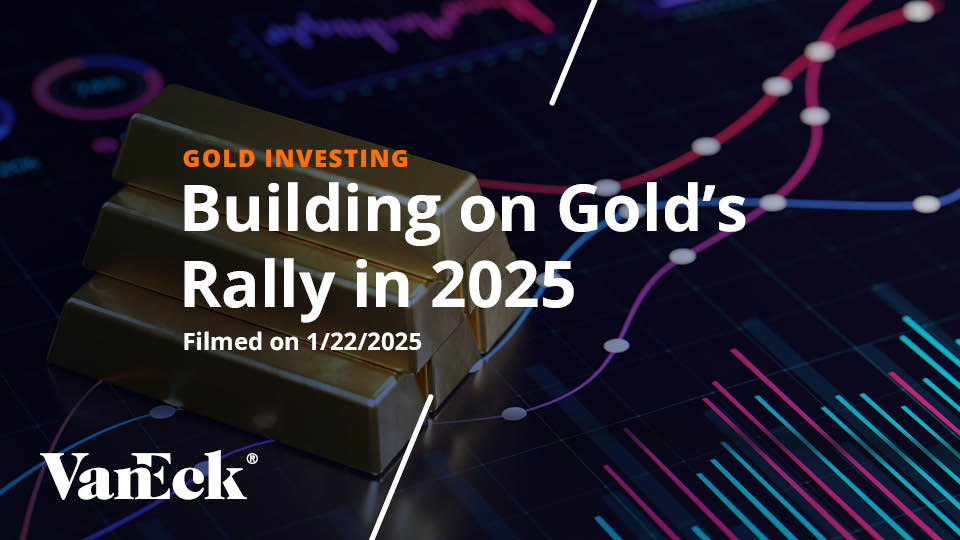Ready, Set, Gold! Bull Run May Have Just Begun
26 September 2024
Read Time 3 MIN
Gold is one of the best performing asset classes year-to-date, outperforming U.S. and international equities and bonds, commodities and other real assets (broadly speaking). Continued global central bank buying and heightened geopolitical tensions were among the key drivers of gold’s strong returns earlier in the year. More recently, the U.S. Federal Reserve’s (Fed’s) pivot on interest rates and nascent signs of returning investment demand have been more prevalent drivers and could, in our view, lead to even higher prices in the near-term.
Gold Has Delivered Impressive Year-to-Date Performance
Source: FactSet. Data as of September 23, 2024. “U.S. Stocks” represented by the S&P 500 Index. “REITs” represented by FTSE NAREIT All REITs Index. “EM Stocks” represented by MSCI Emerging Markets Index. “International Stocks” represented by MSCI AC World ex USA Index. “U.S. TIPS” represented by Bloomberg U.S. TIPS (1-3 Year) Index. “U.S. Bonds” represented by Bloomberg U.S. Aggregate Bond Index. “International Bonds” represented by Bloomberg Global Aggregate ex US Index. “Commodities” represented by Bloomberg Commodity Index. Past performance is not indicative of future results.
Purchases from global central banks, particularly those in China and other emerging markets, has been a developing trend since the Global Financial Crisis (GFC). For the last several years, including the first half of 2024, this has contributed to strong gold demand. This trend, in our view, may suggest a broader desire by these countries to "de-dollarize," or reduce their dependence on the U.S. dollar. Not only have global central banks increased their gold reserves, many have communicated that they plan to continue purchasing more gold in the future.
Gold Reserves of China and Other Emerging Markets Are Growing
Source: Goldman Sachs, World Gold Council, VanEck. Data as of June 2024.
More recently, the primary catalyst for higher gold prices has been the Fed’s interest rate policy. The U.S. has focused on addressing high-interest rates in an attempt to achieve a "soft landing" for the economy following a period of record-high inflation. The Fed's recent 50 basis point reduction in its key interest rate was generally welcomed by gold markets. Historically, gold has performed well during such rate-cutting cycles, with an average cumulative return of around 25% over 500 trading days following the Fed's first cut. Rate cuts tend to weaken the U.S. dollar, further boosting gold’s appeal to global investors, and as uncertainty about the broader economy grows, gold benefits from its status as a safe-haven asset.
Gold Historically Performs Well Following First Fed Rate Cuts
Source: JPMorgan, VanEck. Data as of June 2024. Past performance is not indicative of future results.
Absent from gold’s recent rally has been Western investment demand, tracked via gold-backed exchange-traded funds (ETFs), but flows into gold-backed ETFs have started to pick up. Historically, gold ETF flows have been a catalyst for higher gold prices. The question remains whether the disconnect between flows and prices will close and, if so, what implications it will have for an even higher gold price.
Until Recently, Gold Prices and ETF Gold Holdings Were Closely Connected
Source: World Gold Council. Data as of September 20, 2024. Past performance is not indicative of future results.
Looking forward, we believe gold is well positioned to continue its rally, especially if Western investors return to the market. The anticipation of further rate cuts by the Fed, along with continued inflationary pressures and geopolitical risks, are likely to further bolster gold's appeal as an attractive alternative to a weaker dollar and a hedge against market volatility. With this backdrop, we believe that gold prices could reach their inflation-adjusted highs of $2,800 per ounce in the near term.
Related Insights
IMPORTANT DEFINITIONS & DISCLOSURES
This material may only be used outside of the United States.
This is not an offer to buy or sell, or a recommendation of any offer to buy or sell any of the securities mentioned herein. Fund holdings will vary. For a complete list of holdings in VanEck Mutual Funds and VanEck ETFs, please visit our website at www.vaneck.com.
The information presented does not involve the rendering of personalized investment, financial, legal, or tax advice. Certain statements contained herein may constitute projections, forecasts and other forward looking statements, which do not reflect actual results. Information provided by third-party sources are believed to be reliable and have not been independently verified for accuracy or completeness and cannot be guaranteed. Any opinions, projections, forecasts, and forward-looking statements presented herein are valid as of the date of this communication and are subject to change without notice. The information herein represents the opinion of the author(s), but not necessarily those of VanEck.
The views contained herein are not to be taken as advice or a recommendation to buy or sell any investment in any jurisdiction, nor is it a commitment from Van Eck Associates Corporation or its subsidiaries to participate in any transactions in any companies mentioned herein. This content is published in the United States. Investors are subject to securities and tax regulations within their applicable jurisdictions that are not addressed herein.
All investing is subject to risk, including the possible loss of the money you invest. As with any investment strategy, there is no guarantee that investment objectives will be met and investors may lose money. Diversification does not ensure a profit or protect against a loss in a declining market. Past performance is no guarantee of future results.
